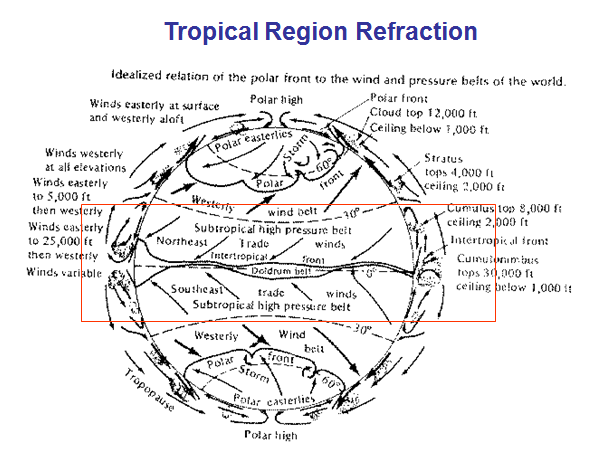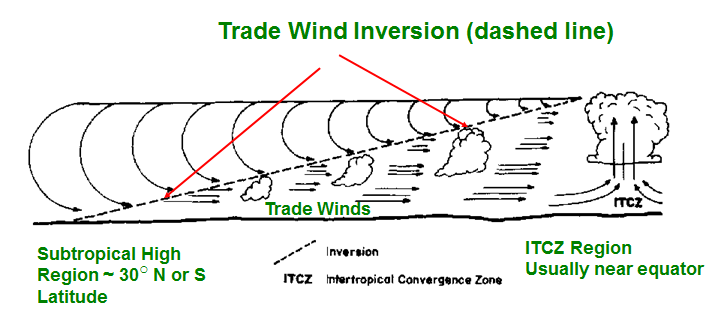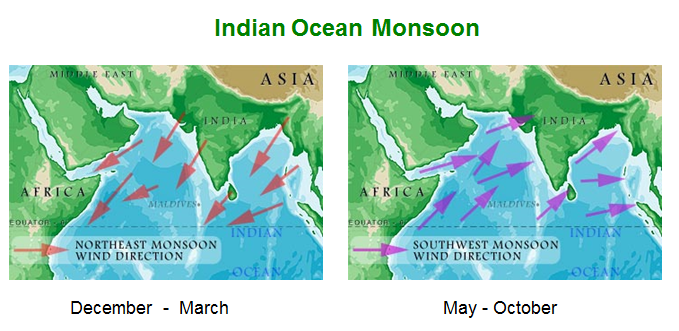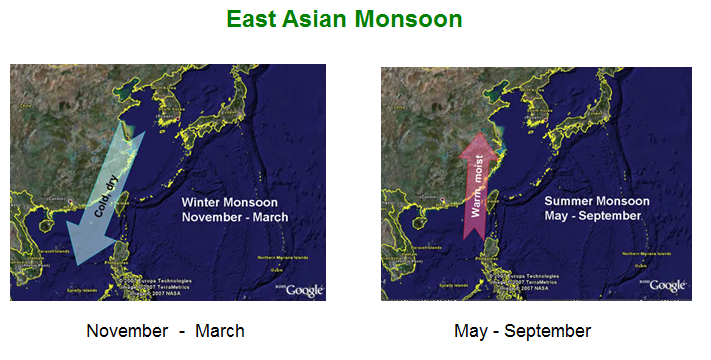The diagram at right shows idealized locations of a polar high, a subtropical high, and a cyclone low with associated warm (red) and cold (blue fronts) in the Northern Hemisphere. These systems move west to east in mid-latitudes.
Next, we'll look individually at each part of these systems in terms of ducting. Below is a diagram similar to the schematic shown at right. In general, ducting is unlikely near the Low and the frontal regions. It is more likely in the high pressure areas.
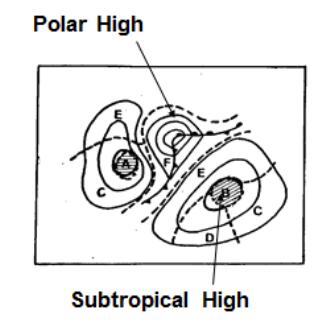
We'll look at each of the areas labeled A through F next in detail.
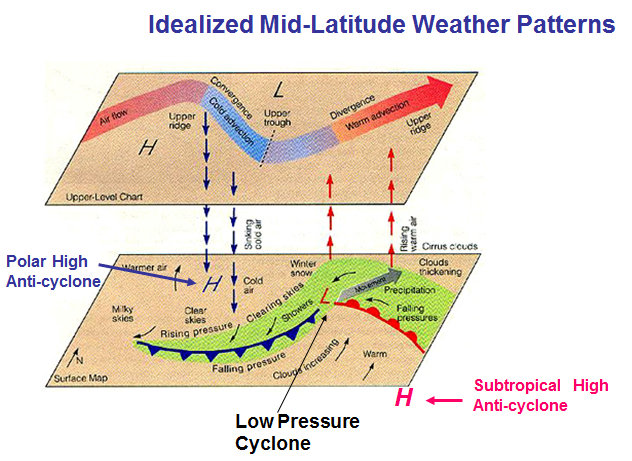
Image courtesy of Federation of American Scientists, http://www.fas.org/irp/imint/docs/rst/Sect14/baroclinic_schem_2p.jpg.
